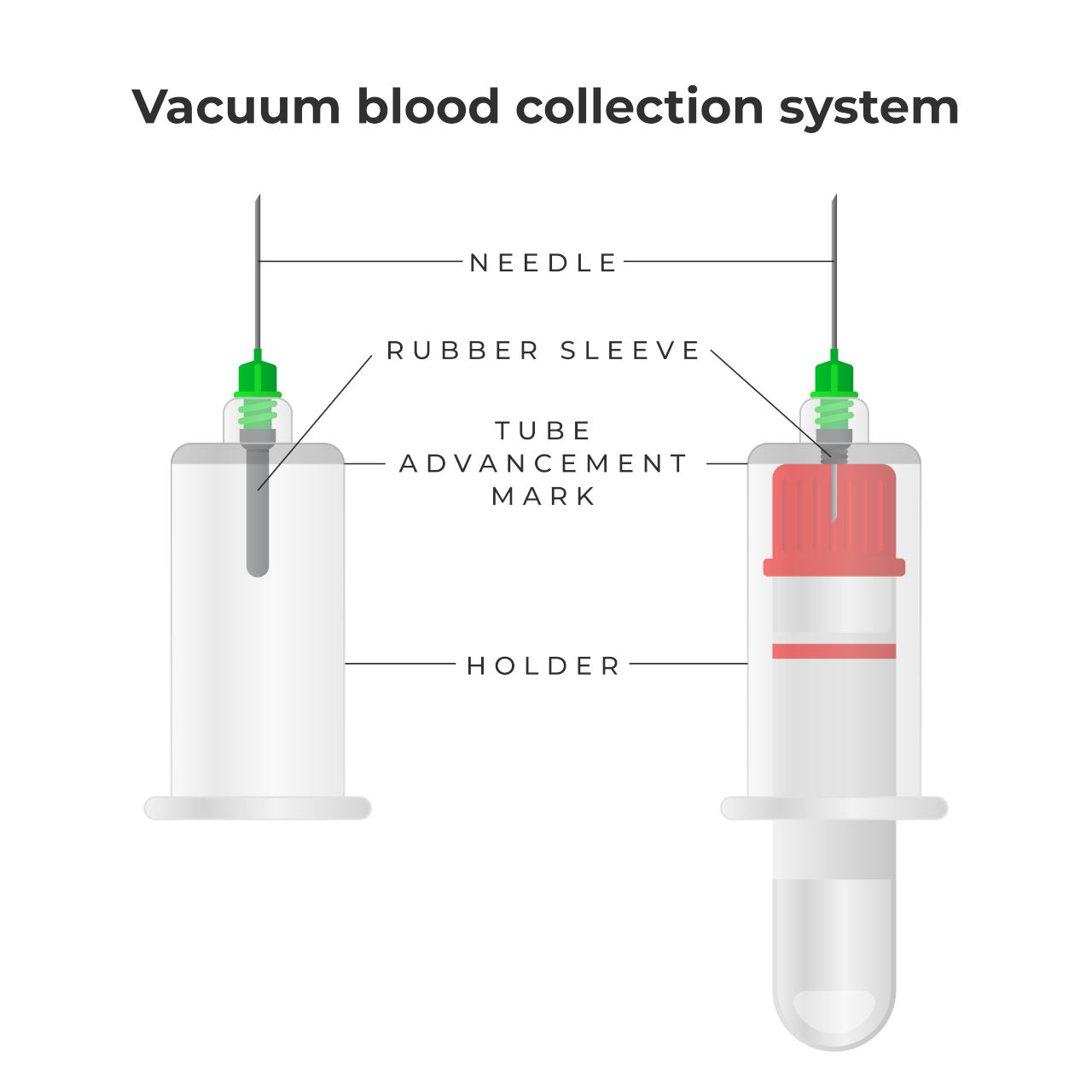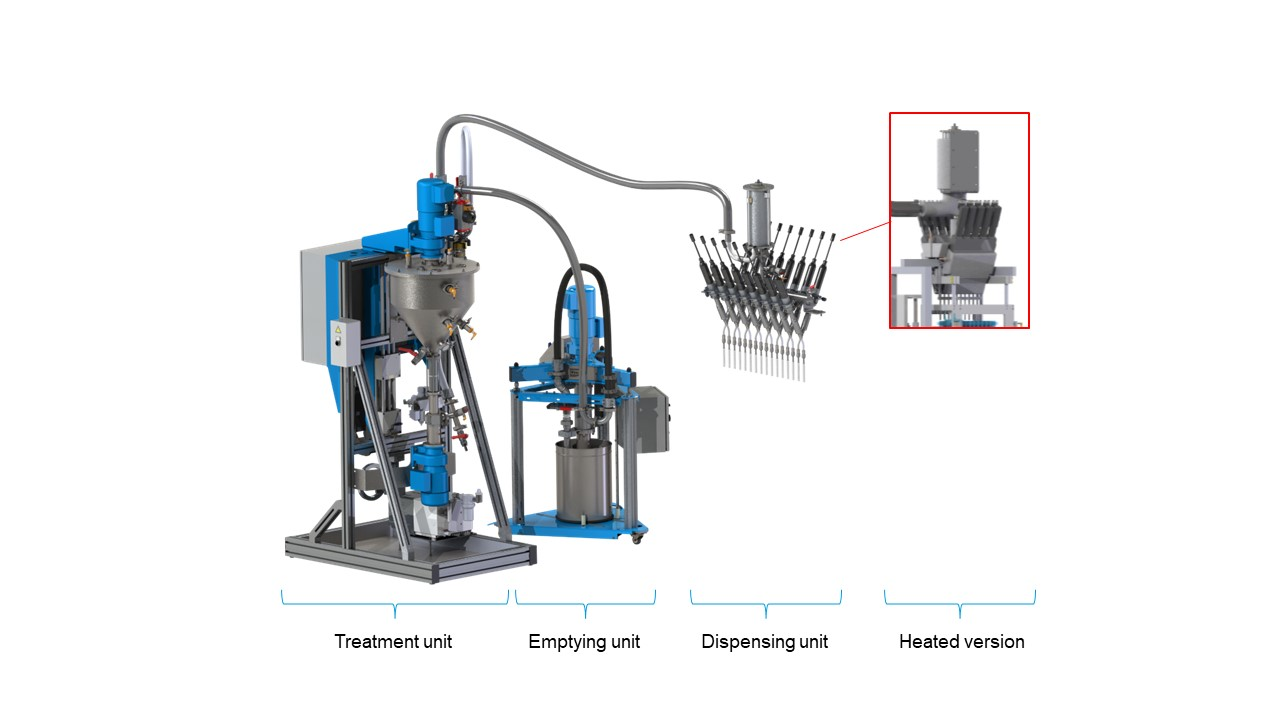Why accurate laboratory results depend on the dosing technique
Blood collection: Tubes with serum separator gel are indispensable in the day-to-day work in clinics and practices
In everyday medical practice, a distinction is made between arterial, venous and capillary blood sampling, as is done, for example, during a blood sugar check on the fingertip. Venous blood collection using blood collection tubes, e.g. a so-called vacutainer, is the most common method on the basis of which laboratory analysis is carried out.
Blood consists of liquid and solid matter. If the two are separated from each other, e.g. by centrifugation, so-called plasma or serum is produced. The blood collection tube already plays an important role here, as its quality is decisive for how exact and therefore meaningful the laboratory values are. Blood collection tubes are often produced under extremely strict quality criteria.
From the principle of application that gave it its name: The Vacutainer
Taking blood samples with blood collection tubes is based on the negative pressure principle. For example, Vacutainers – brand name of the company Becton Dickinson – consist of a plastic holder, a blood collection tube, and a double-sided needle, as shown in Fig. 1.
One end of the double-sided needle is screwed into a hole in the top of the plastic holder; the other end is later inserted into the vein for the purpose of taking blood.
The special feature: The collection tubes are pre-filled with serum separator gel.
After the needle has been inserted into the vein, the vacuumed collection tube is carefully pushed into the plastic container, causing it to open. The vacuum now takes hold and draws blood from the vein. The amount of blood taken from the patient is derived from the calibrated amount of vacuum in the collection tube.
When centrifugation stops, it solidifies again – the barrier between the blood layers necessary for analysis is now present. This clearly demonstrates the importance of precisely dosing the correct amount of serum separator gel in the collection tube.
Hard work: From production to the laboratory
The manufacturing process of the collection tubes filled with serum separator gel begins with the feeding of the product parts into the machine. Usually stored as bulk material in containers on the machine, they are fed to an assembly line via special sorting and separating units.
The serum separator gel is dosed in the filling station, but it can also be other substances, depending on the diagnostic requirements. After a spraying and drying process, the containers are transported to the vacuum station, where the stoppers are also inserted by machine.
While vacuuming and plugging are standardized processes in the pharmaceutical and in vitro diagnostic manufacturing environment, the dosing of serum separator gel is challenging: With a viscosity of about 4 million mPas, the gel is extremely thread-forming, and is sensitive to temperature too. As important as it is for separating blood and serum by centrifugation, it makes the production process even more difficult.
The viscosity of the gel in combination with the intensive thread formation comes on top of that. Most of the time it forces the plant operator to use an additional device such as pneumatic valves in order to control the formation of threads during filling.
All in all, general conditions that slow down the process.
The idea: Collection tubes with serum separator gel put to the test
The most important thing for manufacturers of collection tubes with serum separator gel is maximum performance in combination with precision – under no circumstances should the gel touch the inner wall when filling the collection tube.
Various tests have shown how the optimal dosing should proceed in order to meet all the properties of the serum separator gel during filling and still have a fast process:
- If the nozzle for dosing is placed at the lowest possible point in the removal tube, the material is better distributed in the cavity.
- At the beginning of the filling process, the nozzle or cavity is moved in the opposite direction – the filling level is constantly close to the nozzle outlet.
- A suck-back mechanism implemented at the end of the filling process in perfect alignment with the linear Z-axis movement ensures a clean thread break.
- The viscosity of fluids decreases with increasing temperatures, which must be taken into account during production.
Technical implementation for Vacutainer series production
Based on these findings, a filling system (Fig. 2) was developed which consists of dosing pumps, emptying unit (optionally cartridge, pail, 200l barrel or special size container) and material treatment. The latter is only necessary if the raw material to be dosed has air pockets that do not allow bubble-free dosing and therefore make vacuuming difficult. The dosing unit in the example presented here is designed as a multi-filling system to meet the usually low space requirements in the pharmaceutical environment – a special V-shaped arrangement with two dispenser rows, a centrally arranged distributor and special nozzles on the outlet side create a space-saving, highly functional dosing unit that enables optimum results in the production of blood collection tubes from a qualitative and quantitative point of view.


